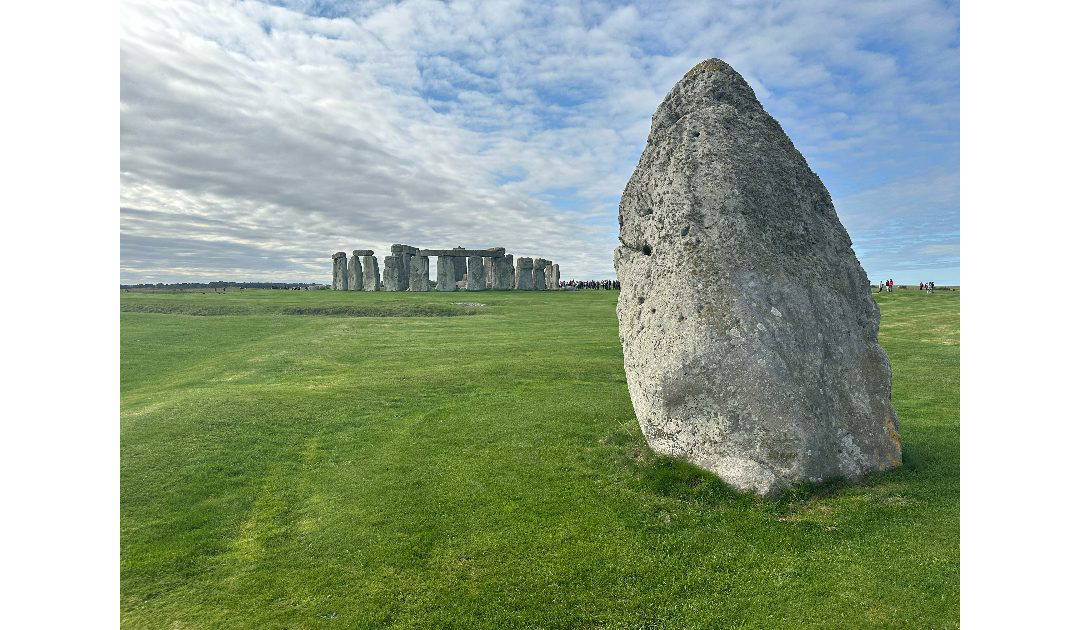Claire told me long ago that time immemorial, or before legal memory, is defined as before 1189 A.D., and was fixed by the Statute of Westminster in 1275. Today we visited Stonehenge, a Neolithic stone circle on Salisbury Plain, and it made me wonder what the definition of prehistoric is. As a writer of historical crime fiction, I think I should know my boundaries.
The dictionary tells me that prehistoric is before the time of written historical accounts. The first known use of stone tools by homin’ini was around 3.3 million years B.C., and the first known writing systems date from around 5,200 years ago. Britain’s earliest written documents are from Roman times, so Stonehenge can be considered prehistoric for Britain.
Since I began writing the Sir Anthony Standen Adventures, every time I visit somewhere new I wonder if Anthony had been there before me. I have been to many places where he had: the Tower of London, Gray’s Inn, Paris, Edinburgh and Rome, to name just a few. I’m pretty sure he wouldn’t have been to Stonehenge though. It’s way off the the route from London to Edinburgh and from Edinburgh to Paris. Stonehenge doesn’t feature in Sir Anthony’s history.
I haven’t tried to trace my family history back beyond Sir Anthony’s father Edmund, my 11th great-grandfather. I very much doubt that I will venture beyond legal memory, let alone reach Roman times. So I shall continue the series forwards through history. I’m in 1615 at the moment. The Estates General in Paris has just finished. I am speaking of my work in progress, The Favourite Murder, the fifth book in the Sir Anthony Standen Adventures. I have no idea what historical event will inspire the sixth book. That’s quite a long way off at the moment. I’m around a third of the way through the first draft of The Favourite Murder and have written 75,000 words.

